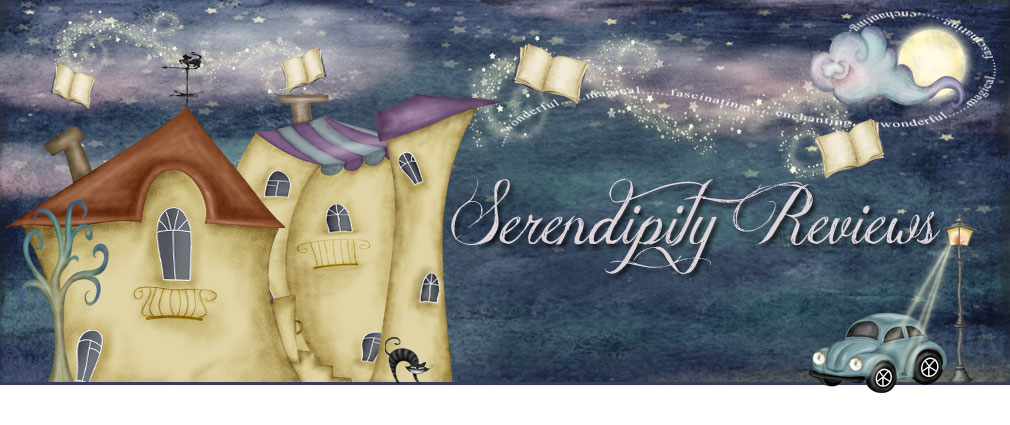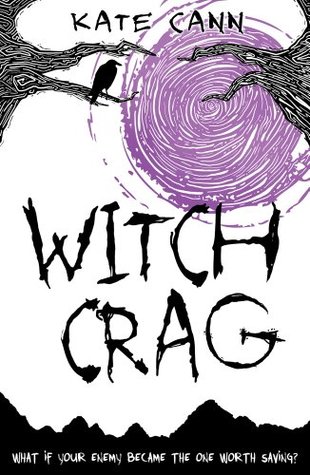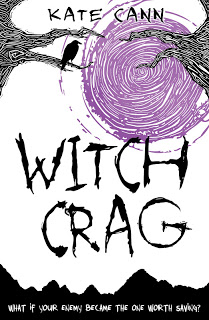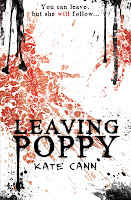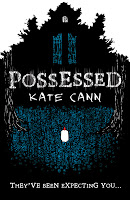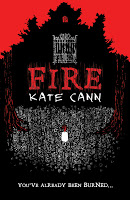Pages - 376
Published by Scholastic in October 2012
Kita crawled the last stretch of the bramble tunnel on her stomach to protect her face and hands from thorns. Then she wriggled out on to the flint ledge and gazed down at the grasslands that sloped away below.
Nada's funeral procession had just emerged from the greater outer gates of the hill fort. Two men carried the flimsy stretcher with the old woman's body on it; two boys who had opened the heavy wooden gates and who now ran back in an arc to close them again, followed behind.
Goodreads Summary
In a tribe where basic survival is the only priority, Kita must make a choice: to accept arranged marriages and being treated with less value than sheep, or escape and journey to the place that even the strongest men fear with their lives — Witch Crag.
But a common threat is facing the witches and sheepmen alike. The tribes must somehow overcome their prejudices and join together if they are to win a war that threatens to destroy everything they hold as good.
*********
For some reason I was expecting this to be really scary, but it wasn't at all. This was my first Kate Cann novel and I had been led to believe that she wrote frightening books yet this wasn't like that at all. This book was a beautifully written dystopian/fantasy which was reminiscent of the Mad Max films. The world building was fantastic and I found it very easy to immerse myself in the segregated world the author had created. The book follows the journey of Kita, who knows in her heart that there is more to life outside of the gates. Just as should be, she values her life and her own importance and can see the potential of her future, should she escape. At first she is disgusted by Arc, the cocky and arrogant foot soldier, destined to one day lead the sheep people. He treats her like a sexual prize to be had and fears his insistence to mate. When it looks as though she will lose her friend, Quainty, who is to be married off to the horseman, she is quick to put their escape into action.
Now you're probably thinking that Arc must be a real jerk, and for the first half of the book, I would totally agree with you, but as situations develop and events unfold, Arc changes dramatically. He grows up very quickly, realising that the old ways of life are becoming archaic and dramatic change is needed for their village to survive. I went from hating him to loving him by the end of the book and from what I can gather that was the author's intention. Kita grows dramatically in this book too; in the early chapters she appears quite innocent and timid, but as her powers grow she becomes a force to be reckoned with and is soon valued highly by her peers.
The women were treated really badly in this book. They were seen as being lower than even the sheep they cared for and at times I found myself frustrated by this. Women were treated like cattle, used for mating and slave labour. Children were born out of necessity and existed without ever knowing of the existence of love. The witches were feared by the other villagers mainly because of lack of knowledge on their behalf. It took time for everyone to learn the truth about Witch Crag.
The segregated villages were stifling to read about. Each male dominated village seemed to run under a dictatorship and the only one worth living in was the one they feared most of all.
This book was a really interesting read and one that flowed with ease; I found it extremely easy to read and I was soon lost in the story. I loved learning more about the ways of the witch, a subject that always attracts my interest.
My only niggle with the book was the ending which I felt told us what would happen rather than actually showing us. It all felt a little rushed and personally I would have liked to have seen an epilogue set in the near future, showing how life had changed and how each society had embraced the new regime.
Apart from that I loved it and I look forward to reading all the republished books by this author.
For some reason I was expecting this to be really scary, but it wasn't at all. This was my first Kate Cann novel and I had been led to believe that she wrote frightening books yet this wasn't like that at all. This book was a beautifully written dystopian/fantasy which was reminiscent of the Mad Max films. The world building was fantastic and I found it very easy to immerse myself in the segregated world the author had created. The book follows the journey of Kita, who knows in her heart that there is more to life outside of the gates. Just as should be, she values her life and her own importance and can see the potential of her future, should she escape. At first she is disgusted by Arc, the cocky and arrogant foot soldier, destined to one day lead the sheep people. He treats her like a sexual prize to be had and fears his insistence to mate. When it looks as though she will lose her friend, Quainty, who is to be married off to the horseman, she is quick to put their escape into action.
Now you're probably thinking that Arc must be a real jerk, and for the first half of the book, I would totally agree with you, but as situations develop and events unfold, Arc changes dramatically. He grows up very quickly, realising that the old ways of life are becoming archaic and dramatic change is needed for their village to survive. I went from hating him to loving him by the end of the book and from what I can gather that was the author's intention. Kita grows dramatically in this book too; in the early chapters she appears quite innocent and timid, but as her powers grow she becomes a force to be reckoned with and is soon valued highly by her peers.
The women were treated really badly in this book. They were seen as being lower than even the sheep they cared for and at times I found myself frustrated by this. Women were treated like cattle, used for mating and slave labour. Children were born out of necessity and existed without ever knowing of the existence of love. The witches were feared by the other villagers mainly because of lack of knowledge on their behalf. It took time for everyone to learn the truth about Witch Crag.
The segregated villages were stifling to read about. Each male dominated village seemed to run under a dictatorship and the only one worth living in was the one they feared most of all.
This book was a really interesting read and one that flowed with ease; I found it extremely easy to read and I was soon lost in the story. I loved learning more about the ways of the witch, a subject that always attracts my interest.
My only niggle with the book was the ending which I felt told us what would happen rather than actually showing us. It all felt a little rushed and personally I would have liked to have seen an epilogue set in the near future, showing how life had changed and how each society had embraced the new regime.
Apart from that I loved it and I look forward to reading all the republished books by this author.
